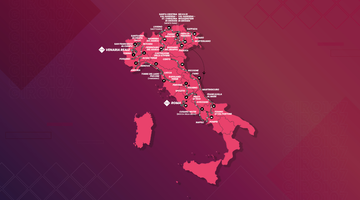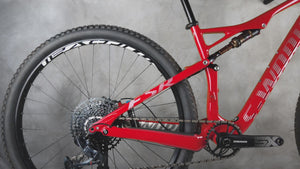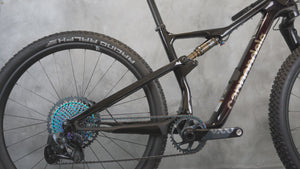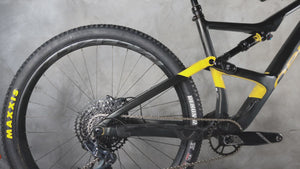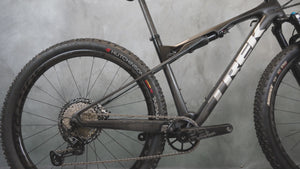How to choose your road bike crankset?
To choose the right crankset for your road bike, you need to understand how it works and what the different parts are... But it's a relatively complex process. In addition to the number and size of chainrings you need to take into account frame compatibility with bottom bracket and crank length... It's enough to make you dizzy, and make you want to leave it all in its original configuration! 😵
In this article, we'll explain what makes up your crankset,Badré to help you make the right choice... or at least to give you a vague idea of what's going on between your pedals!
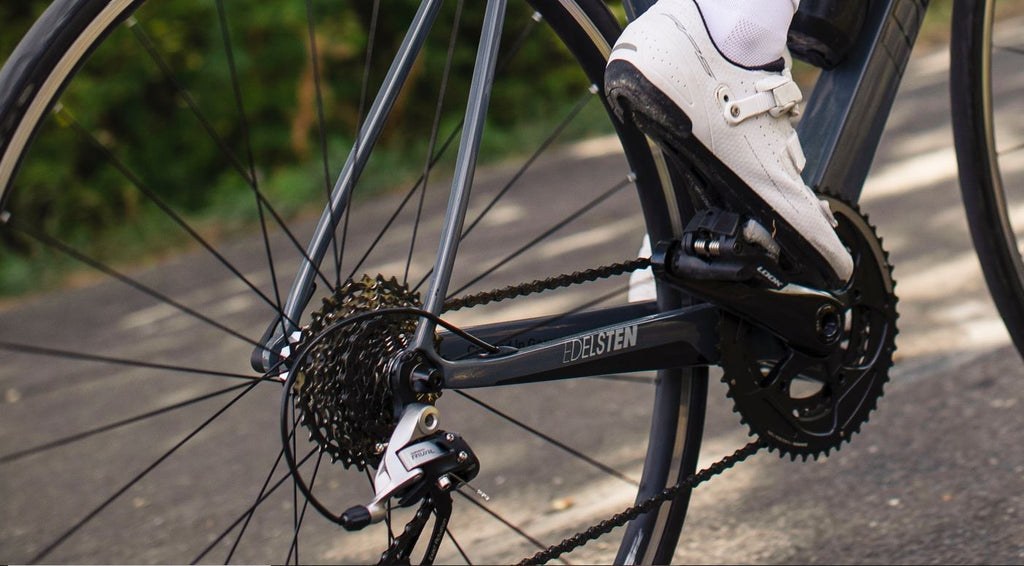
Composition of a road bike crankset
Axle and bottom bracket
Let's start with the heart of the crankset, which is also the only part not visible.
The bottom bracket is the cylinder inside which the axle passes. And the axle is the part that connects the two cranks.
Even if it's fairly simple to visualize, the various technologies that have emerged around the bottom bracket in recent years have made the subject rather complex...
Road bikes were originally equipped with a square axle, with the bearings inside. This is still the case for the majority of bikes sold today, as it's the cheapest solution to produce.
But as always, to improve road bike performance, manufacturers have sought to innovate. Indeed: smoother pedaling = more watts = better performance ⏱
Gradually, threaded housings appeared, with bearings on the outside for greater rigidity and lightness... If you're not already confused, you should know that there are two types of thread: English (symbolized by a BSA) and Italian (ITA). For this reason, not all housings are compatible with all frames.
And it's not a question of brand nationality (that would be too simple!). For example, Colnago and Pinarello, the two leading Italian manufacturers, don't use the same threading! 🙃
To choose the right bottom bracket, you need to be careful which thread is compatible with your frame... If it's a thread at all! 👇
That's right... Another system, the Press Fit, made its debut around 15 years ago on certain top-of-the-range bikes. No more threads, but a bottom bracket press-fitted into the frame, with the bearings still on the outside.
Here again, even if your frame is designed to accept a Press-Fit bottom bracket, you should be aware that not all Press Fits will be compatible. SRAM, Shimano, Cannondale, Cervélo - to name a few - have all created specific Press Fit housings, with different diameters and/or lengths... 🙄
Don't worry, there are no proven differences in efficiency between these latest technologies. The proof: there's no clear trend in the professional peloton.
Don't worry! All our bikes at The Cyclist House are always sold with a fully compatible crankset! In fact, we always indicate in the bike's technical specifications whether it's a PressFit or threaded crankset.
And when you simply buy the frame, the type of bottom bracket compatible with it is always indicated. 😉
Cranks and star
The rest is much simpler to understand! At either end of this famous bottom bracket are two cranks, to which the pedals are attached.
The cranks can be of different lengths. There are 4 typical sizes: 165, 170, 172.5 and 175 mm. The length of your legs is supposed to determine the right length.
Just remember that long cranks give you more leverage, but short ones allow you to turn your legs faster... So it's hard to draw any conclusions about efficiency.
To help you make the right choice, here's the recommended crank size for you, based on your inseam:
- inseam < 81 cm = 165 mm cranks ;
- between 81 and 83.5 cm = 170 mm cranks;
- between 83.5 and 86 cm = 172.5 mm cranks;
- over 86 cm = 175 mm cranks.
The star is the part to which the chainrings are attached (except compact cranksets...).
👉 Since we're talking about cranksets and cranks, we also have a great article on power sensors! 😁
The different types of chainring

The most common: the double chainring
The double chainring is by far the most common setup found on road bikes! With a large chainring ranging from 50 to 54 teeth, and a small chainring with 34 to 39 teeth, this choice offers the advantage of going everywhere.
Of course, there's a world of difference between a 54/39 and a 50/34... So how do you choose your chainrings on a road bike?
With identical cassettes, the 50/34 is best suited to :
- for racing beginners;
- for those looking for a "relaxed" approach who don't want to push too hard;
- for those living in mountainous areas.
The 52/36 will be a little more difficult to ride. It is therefore recommended for more experienced cyclists. But if you're riding in a fairly flat area, it'll pass muster even for a beginner.
As for the 54/39 size, it's more likely to be found among professionals, as it requires quite a bit of power. The strongest riders will use even higher gear ratios on flat stages, or in time trials (58 or even 60 teeth for Filippo Ganna or Remco Evenepoel on some TT!).
Of course, you can also vary the cassette to suit the terrain. With a 50/34 or 52/36, you can easily take along a 11/28 cassette. That's enough for most outings.
However, for the mountains, you'll need to adapt a little. For example, the ideal gear ratio for Mont Ventoux would be 34/30 or 36/32... and the same goes for Alpe d'Huez or the other major passes 🚵♀️
The new kid on the block
The vast majority of mountainbike and very common in gravel, the single-plate is relatively uncommon on the road. Only the Jumbo-Visma uses it (and even then, not always).
The advantages are weight savings (as there's no front derailleur) and reduced risk of chain jump.
Obviously, the single chainring is smaller: 48 or 50 teeth, with a wider range on the cassette (10-36 for Jonas Vingegaard in the Tour de France, for example).
Although the Jumbo dominated the season, pro riders are still quite attached to the double chainring. Keep your eyes open in the coming seasons...
The endangered species: the triple plateau
Long used on amateur road bikes, the triple chainring has gradually disappeared. This is partly due to the fact that cassettes now come with more gears: 10, 11 or 12, as opposed to the usual 8. So we don't really need the tiny chainrings any more.
Choosing your road bike crankset

As we mentioned earlier, choosing the right road bike crankset is above all a matter of choosing the right equipment for your level and objectives. As always, when it comes to choosing a crankset for your bike, it's a question of level and riding experience.
If you ride a road bike mainly for leasure, without worrying too much about performance, a 50/34 double chainring will do the trick just fine. Just make sure you have the right crank length, as this can be a source of pain or injury in the long run.
As for the bottom bracket, don't even bother!
For those who are a little more performance-oriented and train regularly, opt for 52/36. On flat or downhill sections, with the wind at your back, this will prevent you from getting stuck too quickly by the gear ratios. And with a decent level of training, the 36 teeth at the front won't be a handicap in the bumps.
As we've seen, the choice of bottom bracket isn't really an issue: it has no effect on performance, it's super-complex and, in any case, the choice is constrained by the frame you're using...
On the other hand, the rest is worth considering. And not just chainring size! Too many cyclists still use cranks that are not adapted to their morphology...
The experts The Cyclist House are at your disposal at +33 3 90 46 19 52 or by e-mail to help you find the road bike that's right for you! 😉














